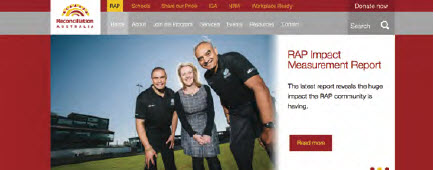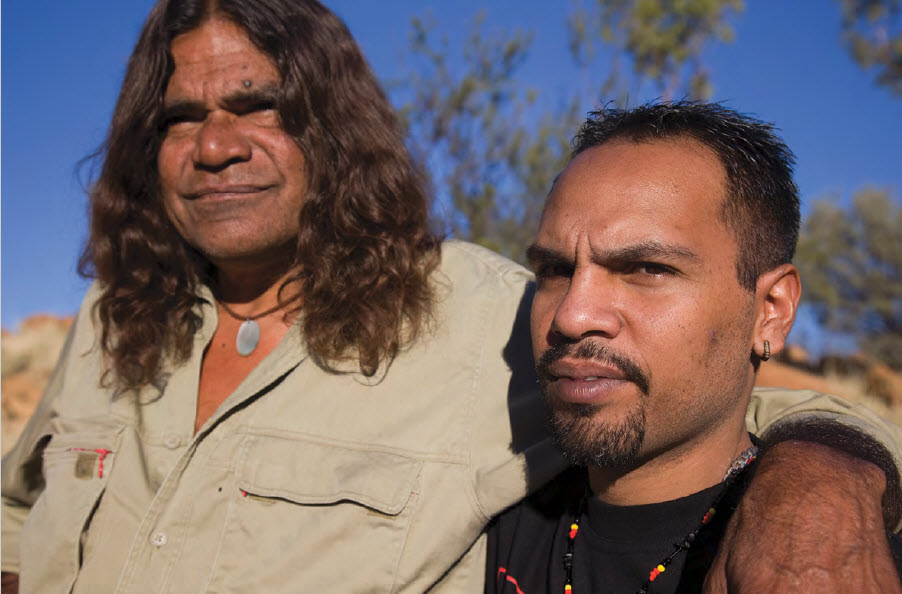3. Practical guidance on designing and implementing ‘special measure’ recruitment strategies
This section sets out practical steps an employer can take to make it clear that a targeted recruitment program for Aboriginal and Torres Strait Islander people is a special measure. Taking these steps will minimise the risk of complaints that such measures are discriminatory, and provide a strong basis to dispute such a claim in the unlikely event a complaint is made.
3.1 Record in writing the intent, design and evidence for the targeted recruitment strategy to be a special measure
It is very important for an employer to document why and how a targeted recruitment strategy will be a special measure to benefit Aboriginal and Torres Strait Islander peoples. This documentation should address all the requirements mentioned in the section above (i.e. the intent of the employer, the evidence of the need for the measure etc). The template attached to this guideline as Appendix 1 can be used for this documentation.
The recruitment should be consistently documented as an employment strategy to address the underrepresentation of Aboriginal and Torres Strait Islander peoples in the employer’s staff/industry/local area. Reference should be made to the need to help address the general employment gap between Aboriginal and Torres Strait Islander peoples and non-Indigenous Australians.
A written record of the intent and evidence for the special measure will not only be important to demonstrate that the recruitment strategy is a special measure in the unlikely event of a complaint, but also will be useful in gaining executive support for the program within organisations. An employer can also use this information to measure the success of the program, to determine whether and when its objective has been achieved.
3.2 In all documents make reference to the ‘special measure’ provisions which provide the legal basis for the targeted recruitment strategy
It is good practice for employers to clearly identify that their decision to target Aboriginal and Torres Strait Islander candidates for a certain position or group of positions has a legal basis. This will minimise the risk of other applicants challenging the employment as a possible breach of discrimination laws.
The Commission and state and territory discrimination/equal opportunity authorities recommend that all advertisements and selection documentation for the special measures position(s) contain the wording:
‘The filling of this position is intended to constitute a special/equal opportunity measure under section 8(1) of the Racial Discrimination Act 1975 (Cth), and [select appropriate jurisdiction/s from: s 27 of the Discrimination Act 1991 (ACT) / s 57 of the Anti-Discrimination Act 1996 (NT) / s 105 of the Anti-Discrimination Act 1991 (Qld) / s 65 of the Equal Opportunity Act 1984 (SA) / ss 25 and/or 26 of the Anti-Discrimination Act 1998 (Tas) / s 12 of the Equal Opportunity Act 2010 (Vic) and s 8(4) of the Charter of Human Rights and Responsibilities Act 2006 (Vic) / s 51 of the Equal Opportunity Act 1984 (WA)].
Case study: Comments from the Queensland Civil and Administrative Tribunal
In Re AP Eagers Limited [2012] QCAT 567, the Queensland Civil and Administrative Tribunal suggested that the employer Eagers include in its advertisement for targeted recruitment positions ‘Eagers considers this advertisement to be an equal opportunity measure under s105 of the Anti-Discrimination Act 1991’. In Downer EDI Mining [2013] QCATA 276 the Tribunal stated that using such wording can be useful ‘to assist with limiting the potential for any complaint’ and to ‘indicate the Company’s intentions to raise this exemption should a complaint be made’.
The position/s is/are therefore only open to Aboriginal or Torres Strait Islander applicants.’
3.3 Consider linking the recruitment strategy to an Indigenous Employment Strategy and/or Reconciliation Action Plan
Case study: Connecting a special measure to an Indigenous Employment Strategy
The Ian Potter Museum of Art (part of the University of Melbourne) wanted to recruit an Indigenous person in the role of an Assistant Curator. When asked to consider whether this recruitment was a special measure, the Victorian Civil and Administrative Tribunal looked at the University’s Indigenous Employment Framework 2010-2013. This document recognised the disadvantage suffered by Indigenous Australians, included reference to relevant statistics from the Australian Bureau of Statistics and the number of Indigenous staff at the University, and stated the University’s commitment to increase its number of Indigenous employees. This document contributed to the Tribunal’s finding that the recruitment met the test for a special measure (see The Ian Potter Museum of Art (Anti-Discrimination Exemption) [2011] VCAT 2236).
An existing Indigenous Employment Strategy can provide useful context and support for the employer’s action in implementing a special measure. Such a document makes clear to the public the employer’s commitment to reducing unemployment for Aboriginal and Torres Strait Islander peoples.
An Indigenous Employment Strategy can be adopted as a separate policy document, or as part of a broader Reconciliation Action Plan (RAP). A RAP outlines practical action that an organisation can take to build strong relationships and enhance respect between Aboriginal and Torres Strait Islander peoples and other Australians. It also sets out an organisation’s aspirational plans to drive greater equality.
If an employer’s RAP makes specific reference to the intention to conduct targeted recruitment strategies to increase employment of Aboriginal and Torres Strait Islander people, this provides further evidence of the purpose, good faith and proportionality of the program.
More information on RAPs, including how to develop one, is available on Reconciliation Australia’s website: http://www.reconciliation.org.au/raphub/
Case study: Including targeted recruitment strategies in a Reconciliation Action Plan
In Crown Resorts’ Elevate Reconciliation Action Plan 2015-17 it recognises that ‘providing meaningful employment for Aboriginal and Torres Strait Islander Australians is central to reconciliation’. The Plan contains a commitment to ‘employ, develop and promote Aboriginal and Torres Strait Islander people at our properties, at every opportunity’.
In its Plan, Crown states that it made a commitment in 2009 to hire 300 Aboriginal and Torres Strait Islander people; a goal which it achieved in 2013. Its current target for its Indigenous Employment Program is to provide 2,000 job opportunities by 2021.
Its Plan also contains the shorter-term measurable goal of hiring 200 new Aboriginal and Torres Strait Islander employees by July 2017.
3.4 Communicate the intention of the recruitment strategy throughout the recruitment process
Communicating the intention of a targeted recruitment strategy throughout its development and implementation is crucial to minimising the risk that its rationale might be misunderstood. The employer’s intention, including the legal provision relied upon, should be reflected in the internal documentation prepared in planning the measure, the job description, advertisements for the position/s, the information provided at a formal interview, and any recruitment documentation provided to the successful applicant/s.
If applicable, the employer can include links to its Indigenous Employment Strategy or Reconciliation Action Plan in any online advertisements for the position/s.
Employers can also consider the involvement of an Indigenous Liaison Officer as a point of contact for applicants for any targeted positions. This Officer could assist Aboriginal and Torres Strait Islander people with the recruitment process, and also explain the concept of and justification for special measures if required.


